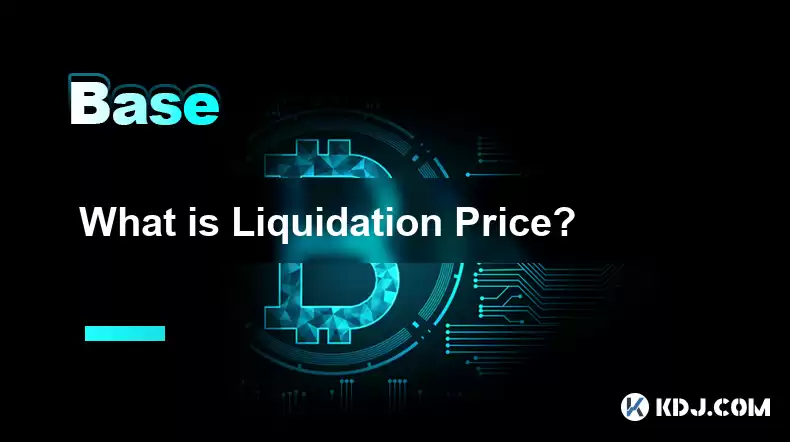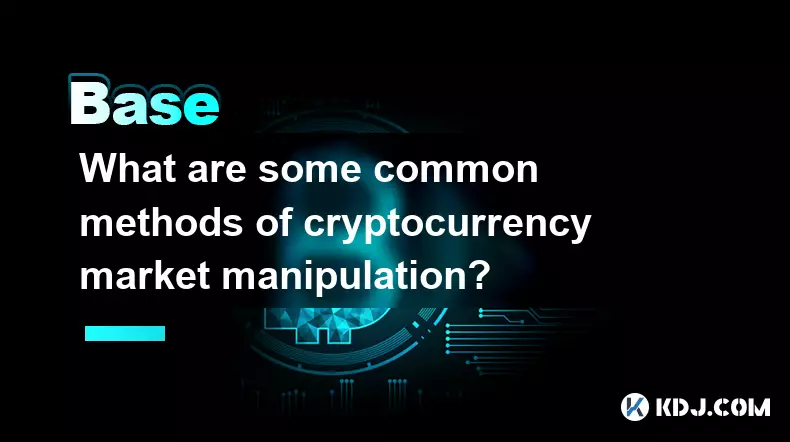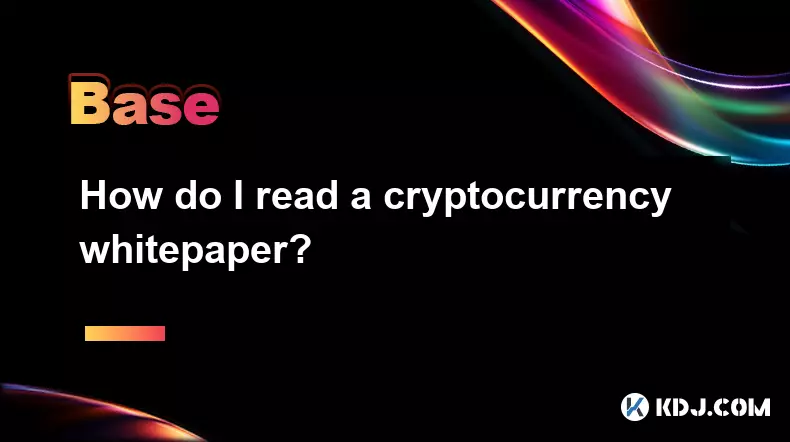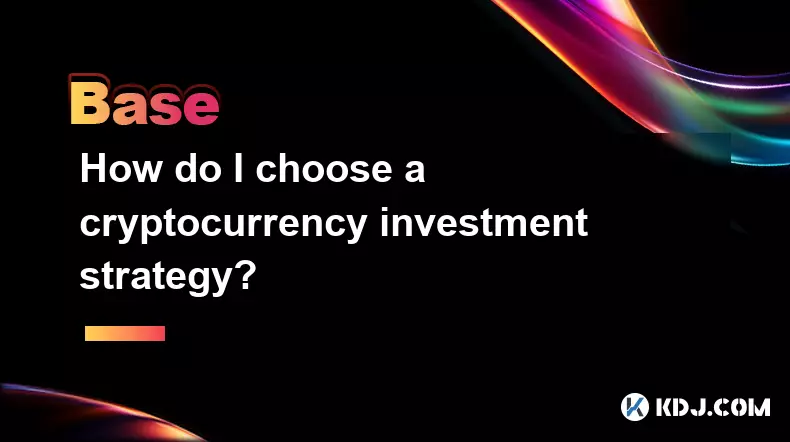-
 bitcoin
bitcoin $122025.899241 USD
-2.12% -
 ethereum
ethereum $4488.068729 USD
-4.11% -
 bnb
bnb $1315.348019 USD
8.65% -
 tether
tether $1.000457 USD
0.03% -
 xrp
xrp $2.875326 USD
-3.69% -
 solana
solana $222.043604 USD
-4.07% -
 usd-coin
usd-coin $0.999682 USD
0.00% -
 dogecoin
dogecoin $0.249887 USD
-5.62% -
 tron
tron $0.337379 USD
-2.59% -
 cardano
cardano $0.827763 USD
-5.06% -
 hyperliquid
hyperliquid $45.774531 USD
-2.43% -
 chainlink
chainlink $22.079309 USD
-5.87% -
 ethena-usde
ethena-usde $1.000156 USD
0.02% -
 sui
sui $3.482566 USD
-3.57% -
 stellar
stellar $0.386982 USD
-4.92%
What is Liquidation Price?
Leverage trading's liquidation price, automatically closing positions to prevent further losses, is determined by leverage, entry price, and margin requirements, varying across exchanges; preventative strategies include careful position sizing and monitoring market volatility.
Mar 14, 2025 at 02:55 pm

- Understanding Liquidation Price: It's the price point at which a trader's leveraged position is automatically closed by an exchange to prevent further losses.
- Calculation Factors: Leverage, entry price, and the margin requirement all significantly impact the liquidation price.
- Preventing Liquidation: Strategies include careful position sizing, using lower leverage, and monitoring market volatility.
- Impact on Market Dynamics: Liquidations can contribute to price volatility, especially in highly leveraged markets.
- Variations Across Exchanges: Each exchange has its own specific method for calculating liquidation prices and managing risk.
In the volatile world of cryptocurrency trading, understanding liquidation price is crucial for anyone using leverage. Liquidation is the forced closure of a leveraged position by an exchange when the position's value falls below a certain threshold, designed to protect the exchange from losses due to margin calls that are not met. This threshold is the liquidation price. Essentially, it's the price at which your position is automatically sold to cover your losses and repay your borrowed funds.
How is Liquidation Price Calculated?The exact calculation varies slightly depending on the exchange, but the core components remain consistent. The primary factors include the initial entry price of your trade, the leverage used, and the exchange's margin requirement. The margin requirement represents the percentage of the trade's value that you must maintain in your account as collateral.
For example, if you buy $1000 worth of Bitcoin with 5x leverage, your margin requirement might be 20%. This means you need to maintain $200 in your account as collateral. If the price of Bitcoin drops significantly, your collateral value falls, and when it drops below the margin requirement, your position is liquidated. The exact liquidation price is determined by a formula incorporating these variables, often including a buffer to account for price fluctuations and slippage.
Factors Affecting Liquidation PriceSeveral factors contribute to the complexity of determining a precise liquidation price. These include:
- Leverage: Higher leverage significantly lowers the liquidation price, increasing the risk of liquidation. A higher leverage magnifies both profits and losses, making it more sensitive to price movements.
- Entry Price: The price at which you initially entered the trade is a key component in the calculation. The further the price moves against your position, the closer you get to liquidation.
- Margin Requirement: Each exchange has its own margin requirement, which directly affects the liquidation price. Higher margin requirements result in a higher liquidation price, offering more protection against liquidation.
- Exchange Fees: Trading fees and other exchange charges can subtly impact the liquidation price, further complicating the calculation. These fees reduce the available margin, making liquidation more likely.
- Slippage: The difference between the expected price and the actual execution price can also play a role, as it can exacerbate losses and trigger liquidation sooner than expected.
Several strategies can mitigate the risk of liquidation:
- Careful Position Sizing: Avoid over-leveraging your trades. Start with smaller positions and gradually increase them as your experience and confidence grow.
- Lower Leverage: Using lower leverage increases the buffer zone before liquidation. While potentially limiting profits, it significantly reduces the risk.
- Market Monitoring: Constantly monitoring market conditions and your position's value is crucial. This allows for proactive adjustments to avoid liquidation.
- Stop-Loss Orders: Employing stop-loss orders helps automatically close your position when the price reaches a predetermined level, minimizing losses before liquidation occurs.
- Risk Management: Implementing a robust risk management plan that considers your risk tolerance and trading strategy is paramount.
Mass liquidations can significantly impact market dynamics. A cascade of liquidations can lead to a downward price spiral, as numerous traders are forced to sell their assets simultaneously, increasing sell pressure. This phenomenon can amplify volatility and create further losses for other market participants.
Variations Across ExchangesDifferent cryptocurrency exchanges employ different methods for calculating liquidation prices and managing risk. It is vital to understand the specific policies of the exchange you are using to accurately assess your risk and avoid unexpected liquidations. Some exchanges may have more lenient or stricter criteria, leading to variations in the liquidation price. Always check your exchange's terms and conditions and documentation to understand their specific approach.
Common Questions:Q: What happens after liquidation?A: After liquidation, your position is closed, and any remaining margin is returned to your account. You will likely have a significant loss, equal to the difference between your entry price and the liquidation price, multiplied by your leverage.
Q: Can I avoid liquidation completely?A: While complete avoidance is impossible in highly volatile markets, implementing proper risk management techniques significantly reduces the probability of liquidation.
Q: Is liquidation always a bad thing?A: While it usually represents a loss, liquidation protects traders from unlimited losses that could arise from highly leveraged positions. It acts as a safety mechanism.
Q: How can I find my liquidation price on my exchange?A: Most exchanges will provide a liquidation price calculator or display it prominently in your open positions. Consult your exchange's help documentation or support team if you cannot find this information.
Q: What is the difference between liquidation and margin call?A: A margin call is a warning that your position is nearing liquidation. Liquidation is the automatic closure of the position when the margin call is not met.
Disclaimer:info@kdj.com
The information provided is not trading advice. kdj.com does not assume any responsibility for any investments made based on the information provided in this article. Cryptocurrencies are highly volatile and it is highly recommended that you invest with caution after thorough research!
If you believe that the content used on this website infringes your copyright, please contact us immediately (info@kdj.com) and we will delete it promptly.
- BlockDAG, DOGE, HYPE Sponsorship: Crypto Trends Shaping 2025
- 2025-10-01 00:25:13
- Deutsche Börse and Circle: A StableCoin Adoption Powerhouse in Europe
- 2025-10-01 00:25:13
- BlockDAG's Presale Buzz: Is It the Crypto to Watch in October 2025?
- 2025-10-01 00:30:13
- Bitcoin, Crypto, and IQ: When Genius Meets Digital Gold?
- 2025-10-01 00:30:13
- Stablecoins, American Innovation, and Wallet Tokens: The Next Frontier
- 2025-10-01 00:35:12
- NBU, Coins, and Crypto in Ukraine: A New Yorker's Take
- 2025-10-01 00:45:14
Related knowledge

How does cryptocurrency achieve decentralization?
Sep 30,2025 at 04:37am
Understanding the Foundation of Decentralization in Cryptocurrency1. Cryptocurrency achieves decentralization primarily through the use of blockchain ...

What are some common methods of cryptocurrency market manipulation?
Sep 27,2025 at 02:55am
Wash Trading and Its Impact on Market Perception1. Wash trading involves an individual or entity simultaneously buying and selling the same cryptocurr...

How do I read a cryptocurrency whitepaper?
Sep 27,2025 at 05:54am
Understanding the Structure of a Cryptocurrency Whitepaper1. Begin by identifying the executive summary, which outlines the project’s core vision and ...

Can I recover lost cryptocurrency?
Sep 25,2025 at 08:18am
Understanding the Nature of Cryptocurrency Loss1. Cryptocurrency operates on decentralized networks, meaning there is no central authority to reverse ...

How do I choose a cryptocurrency investment strategy?
Sep 27,2025 at 03:55pm
Understanding Risk Tolerance in Crypto Investing1. Assessing personal risk tolerance is a foundational step when entering the cryptocurrency market. V...

How can I earn passive income from cryptocurrency?
Sep 23,2025 at 10:18am
Staking Cryptocurrencies for Regular Returns1. Many blockchain networks operate on a proof-of-stake (PoS) consensus mechanism, allowing users to earn ...

How does cryptocurrency achieve decentralization?
Sep 30,2025 at 04:37am
Understanding the Foundation of Decentralization in Cryptocurrency1. Cryptocurrency achieves decentralization primarily through the use of blockchain ...

What are some common methods of cryptocurrency market manipulation?
Sep 27,2025 at 02:55am
Wash Trading and Its Impact on Market Perception1. Wash trading involves an individual or entity simultaneously buying and selling the same cryptocurr...

How do I read a cryptocurrency whitepaper?
Sep 27,2025 at 05:54am
Understanding the Structure of a Cryptocurrency Whitepaper1. Begin by identifying the executive summary, which outlines the project’s core vision and ...

Can I recover lost cryptocurrency?
Sep 25,2025 at 08:18am
Understanding the Nature of Cryptocurrency Loss1. Cryptocurrency operates on decentralized networks, meaning there is no central authority to reverse ...

How do I choose a cryptocurrency investment strategy?
Sep 27,2025 at 03:55pm
Understanding Risk Tolerance in Crypto Investing1. Assessing personal risk tolerance is a foundational step when entering the cryptocurrency market. V...

How can I earn passive income from cryptocurrency?
Sep 23,2025 at 10:18am
Staking Cryptocurrencies for Regular Returns1. Many blockchain networks operate on a proof-of-stake (PoS) consensus mechanism, allowing users to earn ...
See all articles










































































